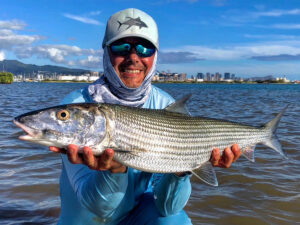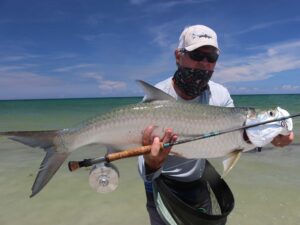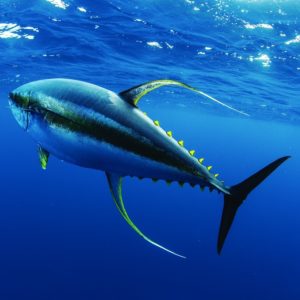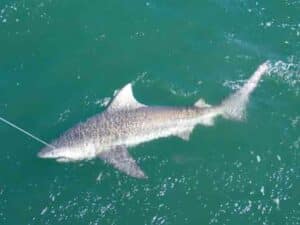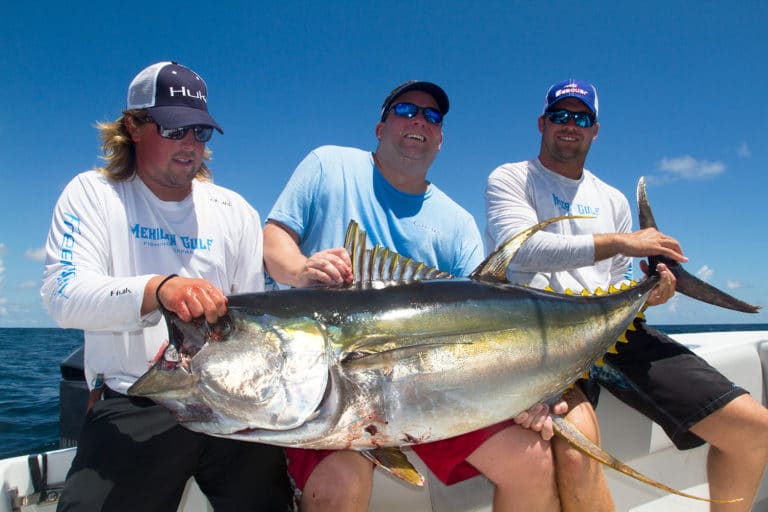In each issue of Sport Fishing magazine, a panel of five international expert ichthyologists identifies unusual and often amazing fishes in photos submitted by readers. Find out what they are and learn fascinating facts about them.
Flamboyant Flattie
QUESTION:
I photographed this flatfish in Bonaire where I saw dozens of them, around the island, picking off glass minnows. None of them looked to be larger than a couple of pounds. What is it?
Jason Arnold
Fort Lauderdale, Florida
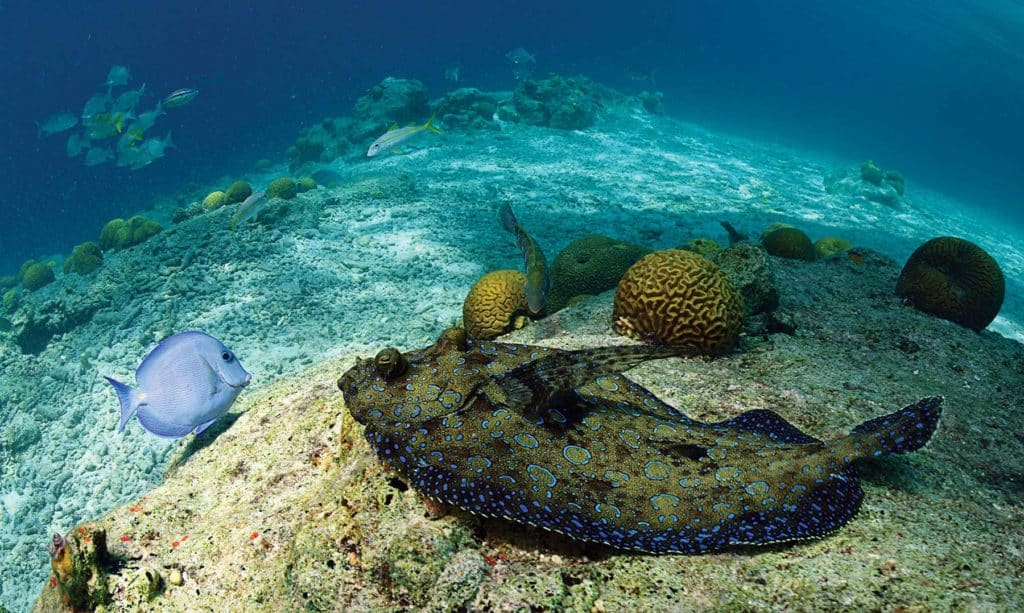
ANSWER:
That’s a beautiful photograph of a peacock flounder (sometimes called a plate fish), Bothus lunatus. The peacock flounder reaches a maximum length of around 18 inches and is excellent table fare. Common in many clear-water habitats at depths from a few inches to over 300 feet, the peacock is usually found in shallower rather than deeper water. In the Western Atlantic, it ranges from Florida to Brazil, including Bermuda, the Bahamas, and the Caribbean Sea; it’s also found off Ascension Island and in the Gulf of Guinea in the Eastern Atlantic. This is the commonest flounder species around coral reefs, though so far no angler has claimed an IGFA all-tackle record for it. When I snorkeled a series of shallow-water artificial reefs off southwestern Puerto Rico, good-size peacock flounder occasionally swam within a few of feet of me. I always carry a knife when I’m snorkeling or scuba diving and … let’s just say that I ate well on those evenings! Like many other flounders, the peacock has the ability to undergo rapid changes in the distribution of pigment granules in its chromatophores (pigment-containing cells) and is adept at blending in with its surroundings. You happened to photograph a particularly vividly colored individual.
—Ray Waldner
No Stumper: It’s a Bumper
QUESTION:
I caught this fish on the north coast of Puerto Rico while fishing in warm, dirty water. It measured 12 inches and weighed no more than a pound because it was really skinny. I guess it’s from the jack family because its pectoral fin looks a lot like that of a jack. I really want to know more about the fish because no one at the tournament could identify it.
Sergio Martinez
Gurabo, Puerto Rico
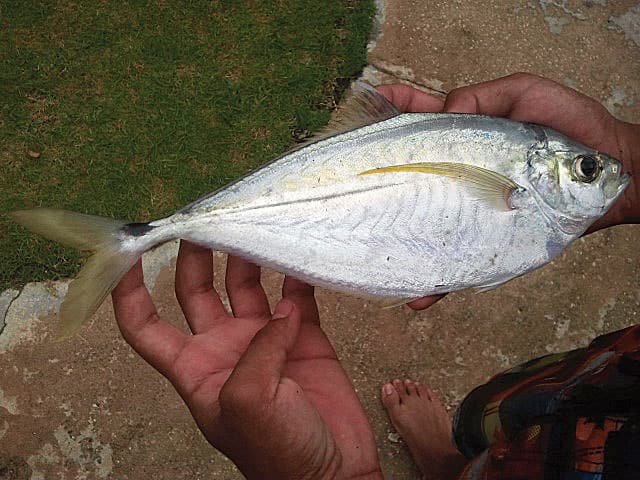
ANSWER:
You caught an Atlantic bumper, Chloroscombrus chrysurus, a member of the jack family (Carangidae). In the western Atlantic region, the Atlantic bumper ranges from Massachusetts to Uruguay, including Bermuda, the Gulf of Mexico, the Bahamas, and the Caribbean Sea. It occurs also in the eastern Atlantic. Chloroscombrus orqueta, the Pacific bumper, inhabits the west coast of Central America and actually might be the same species. The Atlantic bumper frequents shallow marine areas, often entering bays, lagoons and other coastal sites with high salinities. Although this species has been reported to reach a maximum length of around 2 feet, individuals commonly measure no more than a foot. The bumper often forms schools and is sometimes commercially harvested, although it is not highly regarded as a food fish and is said to have dry flesh.
—Ray Waldner
Whip It
QUESTION:
I caught this tiny ray on a small baited hook in the Gulf of Thailand near Koh Chang Island. I believe it to be a dwarf whipray. Can you confirm that ID, and tell me more about this interesting catch?
Johnny Jensen
Denmark
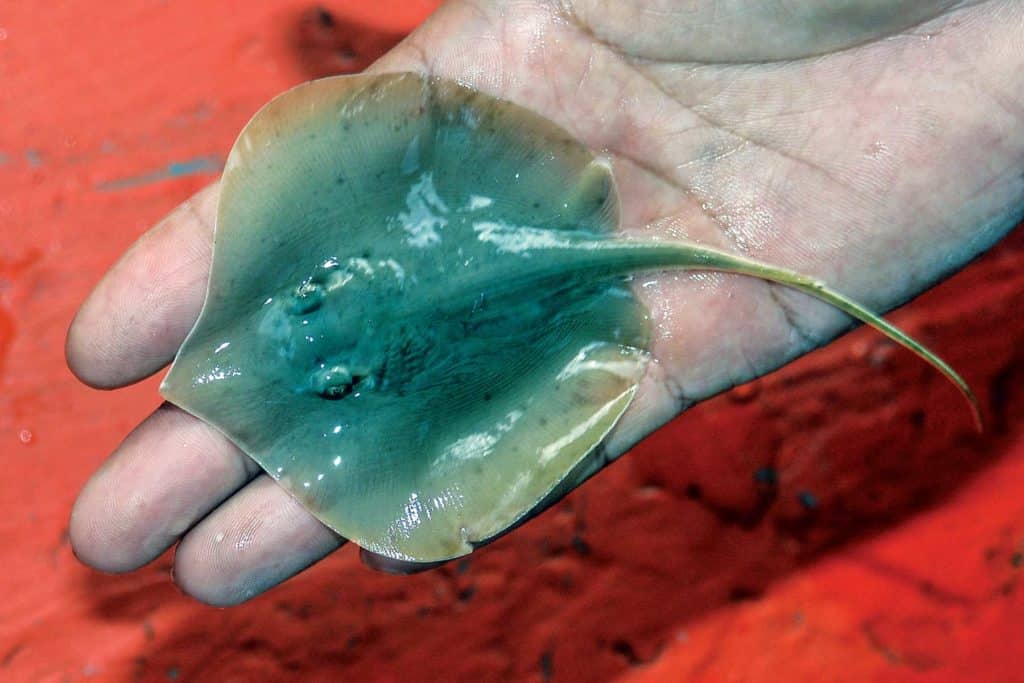
ANSWER:
Johnny, it’s a tough call. Even though your little Thai friend looks very much like a dwarf whipray (Himantura walga), and was caught right in the middle of the Asian-Pacific distribution for that species, at least one other member of the family Dasyatidae (whiptail stingrays) in that part of the world could fit the bill. In the dwarf whipray, the width of its disc roughly equals its body length; its tail is shorter than the body length; and its snout is projecting (pointed), which certainly describes what you have in your hand. But the scaly whipray (Himantura imbricata) has the same features just described. The scaly whipray occurs mainly in the Indian Ocean, but has also been recorded from the Gulf of Thailand. The dwarf whipray reportedly grows to about 8½ inches across the disc, which places it among the smallest of stingrays. However, rays in the family Dasyatidae give birth to live young, which makes it difficult to rule out juveniles of several other species in the family. So unfortunately I can’t say with any certainty which species of whiptail stingray it is without having the specimen in hand.
—Ben Diggles
Dark Secret
QUESTION:
During a recent visit to the Atlantic coast of Panama, this jack was brought aboard. It looks a lot like a blue runner, but it seems far too dark to be that species. Can you enlighten?
Dave Lewis
Dave Lewis Worldwide Fishing
Wales, United Kingdom
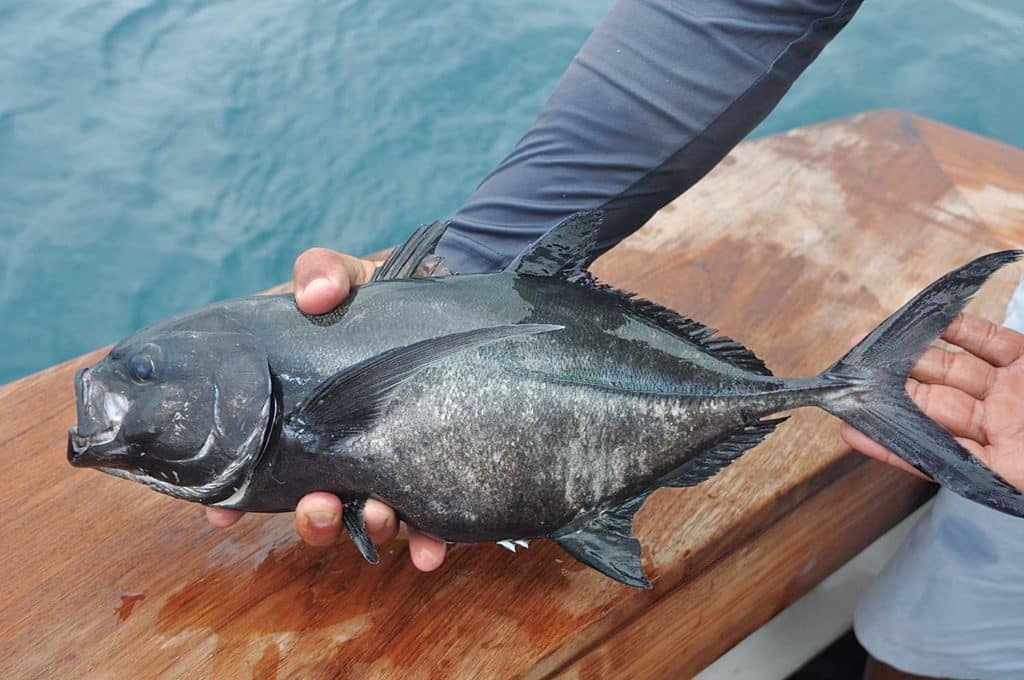
ANSWER:
Although it bears little resemblance to younger, lighter-hued individuals, your catch is a blue runner, Caranx crysos. Blue runners change color as they age. The sides of juveniles are banded, while mature individuals have silvery to grayish sides and darker dorsal surfaces. Older males, such as the fish you caught, turn blackish when it comes time for them to spawn. Blue runners are popular as live baits in many areas, and while many individuals consider them to be too strong-flavored to be good table fare, runners are commercially harvested for food in some areas. The species ranges from Nova Scotia to Brazil, including the Gulf of Mexico and Caribbean in the Western Atlantic as well as in the Eastern Atlantic. Caranx caballus, the green jack of the Eastern Pacific Ocean, might be the same species. Blue runners grow to a maximum length of around 2 feet and inhabit depths to about 350 feet. Spirited fighters on light tackle, blue runners can exceed 10 pounds: The IGFA all-tackle world record is an 11-pound, 2-ounce behemoth taken off Alabama in 1997.
—Ray Waldner
Grunt Work
QUESTION:
An afternoon fishing trip for some guys off the cliff in Barbados turned up this catch that we can’t identify. We caught the fish — just over a foot in length — in 15 feet of water over a mixed sand-and-rock bottom, using live bait similar in size to a pilchard. Can you please help us identify what species it is?
Thomas Atwell
Barbados
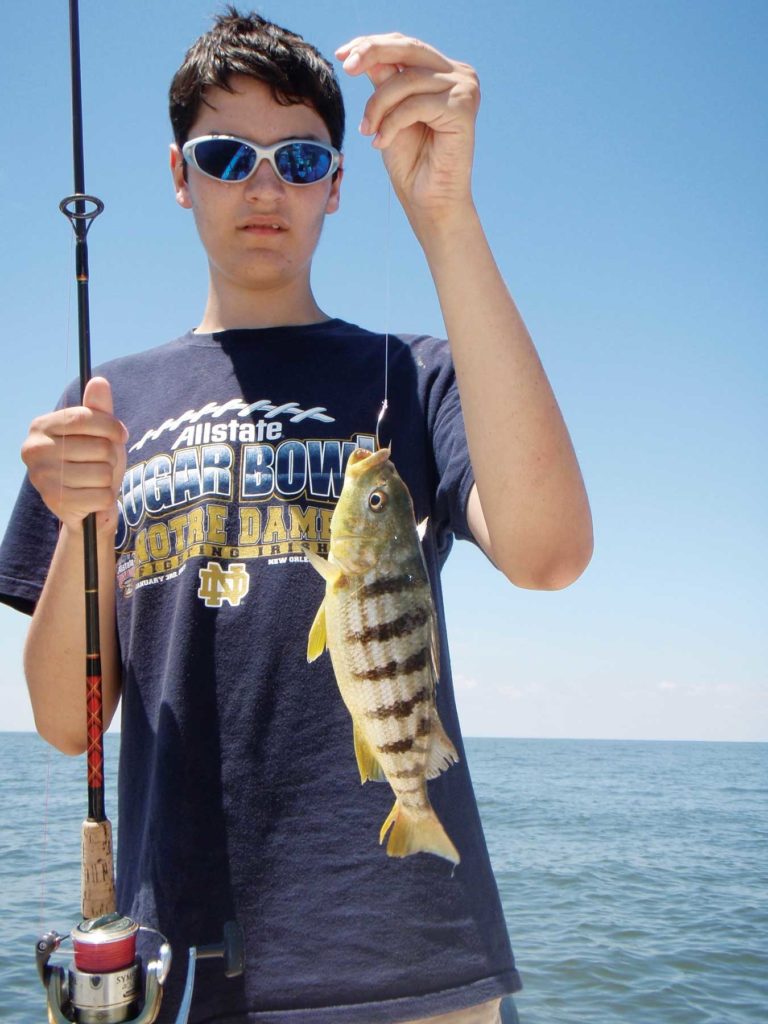
ANSWER:
While it’s a bit atypical as grunts go, your catch is a member of the grunt family Haemulidae. Specifically, it’s a barred grunt, Conodon nobilis. The species ranges from southern Florida to Brazil, including portions of the Gulf of Mexico as well as Jamaica, Puerto Rico and the Lesser Antilles, with a report from Argentina. Interestingly, unlike most grunts, the barred grunt isn’t a reef dweller but lives in bays and other areas with sandy or muddy bottoms. It’s found at depths from the shallows to over 300 feet and reaches a maximum length of slightly more than 12 inches. Barred grunts are reported to be edible but quite bony.
—Ray Waldner
Bandtail Blowfish
QUESTION:
I have fished the Indian River area at Jensen Beach, Florida, several times a week for 66 years and thought I had caught about every species in the river. This puffer is one I’ve never seen. The puffers we catch on almost every trip have a checkered pattern. I think they’re southern puffers. Can your experts identify this species, and give a description of where it is commonly encountered and other details?
Capt. Bob Pelosi
Palm City, Florida
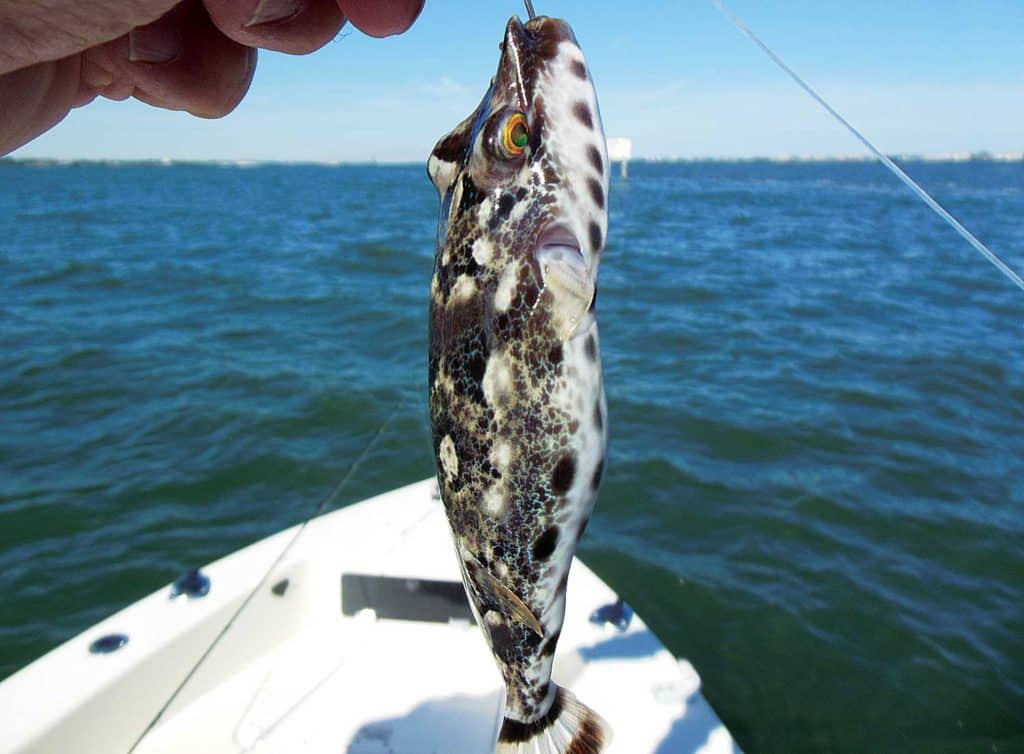
ANSWER:
You caught an aptly named bandtail puffer, Sphoeroides spengleri, Bob. This little guy reaches a maximum length of about a foot but is usually less than half that size. It ranges from Massachusetts through Brazil, commonly inhabiting inshore areas with abundant cover, such as sea-grass beds. The pigmentation of the bandtail puffer’s caudal fin is similar to that of the marbled puffer, S. dorsalis, but the distinctive black spots on a bandtail puffer’s sides and belly can be used to quickly differentiate between these two species. Like other puffers, the bandtail can be dangerous to consume; its viscera contain tetrodotoxin, a very powerful neurotoxin that is named after the puffer’s family: Tetraodontidae. Interestingly, tetrodotoxin — which is thought to be produced by bacteria — is found in a wide variety of invertebrates and vertebrates, which often use it to deter predators and/or to immobilize prey.
—Ray Waldner
Read Next: Strange Fishes from the Deep — Snake Mackerels and More
Sport Fishing‘s Prestigious International Panel of Experts
Northeast
Mike Fahay, Sandy Hook Marine Lab, New Jersey
Southeast
Ray Waldner, Ph.D., Palm Beach Atlantic University, Florida
Gulf of Mexico
Bob Shipp, Ph.D., University of South Alabama
West Coast
Milton Love, Ph.D., UCSB, California
Far Pacific
Ben Diggles, Ph.D., Queensland, Australia
Bluewater Pelagics
John Graves, Ph.D., Virginia Institute of Marine Science
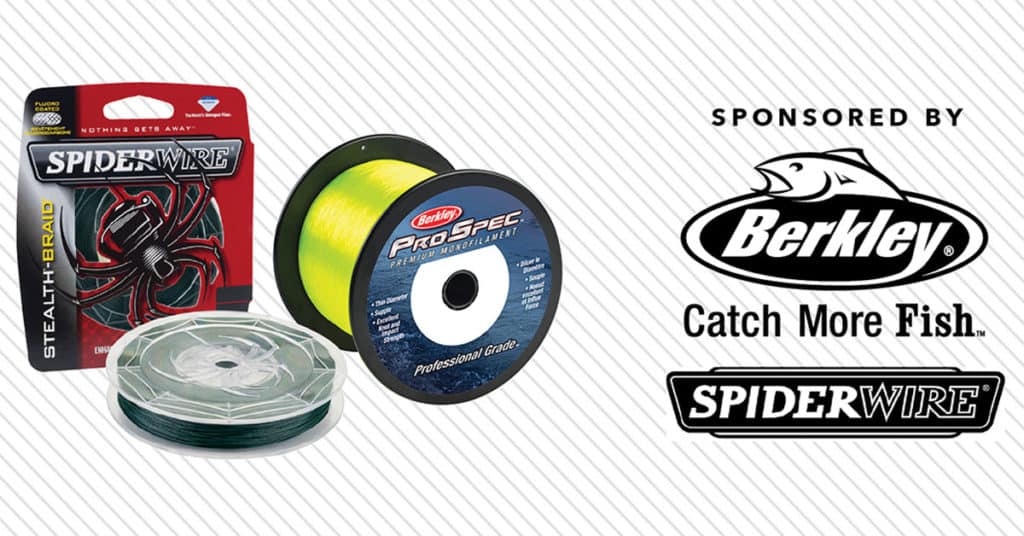
CHALLENGE OUR EXPERTS (And Win Up to 10,800 Yards of Line!)
Send in your question and any relevant photos of your mysterious catch or observation for our experts’ ID and feedback. If we publish your question and you have a shipping address within the United States or Canada, you’ll win a 3‑pound spool of Berkley Pro Spec ocean-blue or fluorescent-yellow monofilament (1,000 to 10,800 yards, depending on line strength) or a 1,500‑yard spool of Spiderwire Stealth braid up to 100‑pound‑test! Send questions and images via email to fishfacts@sportfishing.com (include your hometown) or via post to Sport Fishing Fish Facts, 460 N. Orlando Ave., Suite 200, Winter Park, FL 32789.

